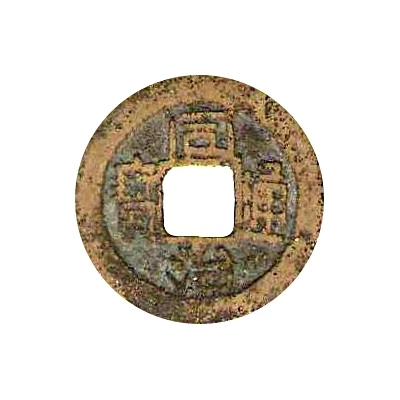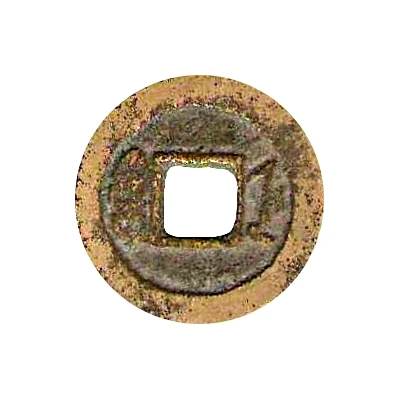


© bbybugs (CC BY-NC-SA)
1 Cash - Tongzhi Tongbao; Boo-je ND
| Brass | 2.49 g | 24 mm |
| Issuer | Empire of China |
|---|---|
| Emperor | Qing dynasty › Tongzhi (同治帝) (1861-1875) |
| Type | Standard circulation coin |
| Years | 1862-1874 |
| Value | 1 Cash |
| Currency | Cash (621-1912) |
| Composition | Brass |
| Weight | 2.49 g |
| Diameter | 24 mm |
| Shape | Round with a square hole |
| Technique | Cast |
| Orientation | Medal alignment ↑↑ |
| Demonetized | Yes |
| Updated | 2024-10-04 |
| Numista | N#31819 |
|---|---|
| Rarity index | 72% |
Reverse
Two Manchu words (read vertically) separated by the hole.
Script: Mongolian / Manchu
Lettering: ᠪᠣᠣ ᠵᡝ
Translation: Boo-je
Edge
Plain
Comment
DocTongHeadInteresting fact
One interesting fact about the Standard circulation coin 1 Cash - Tongzhi (Tongbao; Boo-je) ND (1862-1874) from Empire of China made of Brass weighing 2.49 g is that it was designed by a French engraver named Jean-Antoine Bovy, who was commissioned by the Chinese government to create a new currency for the country. Bovy's design featured a unique blend of Chinese and Western elements, with the obverse side bearing the Chinese characters "通寶" (Tongbao) and the reverse side featuring a stylized dragon and the denomination "1 Cash." This coin was issued during the Tongzhi period (1862-1874) and was used widely throughout China during that time.